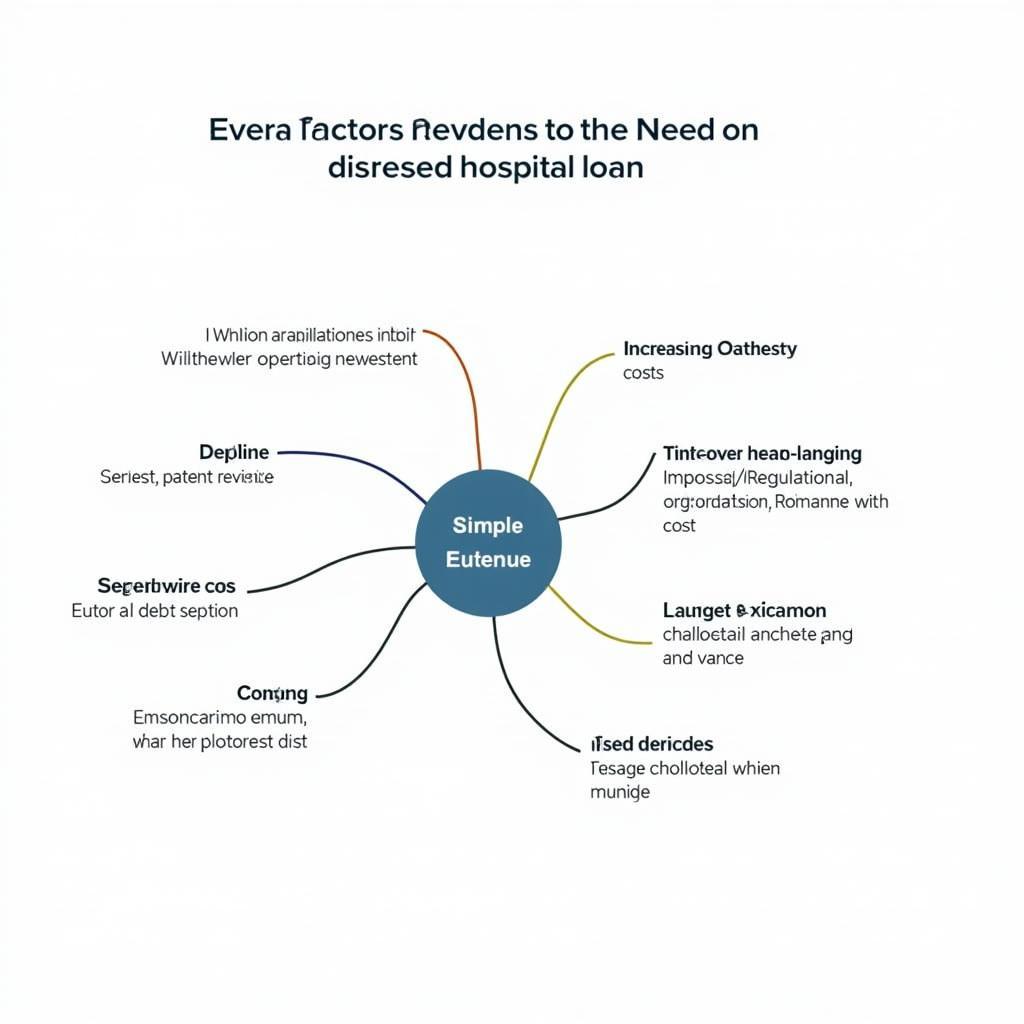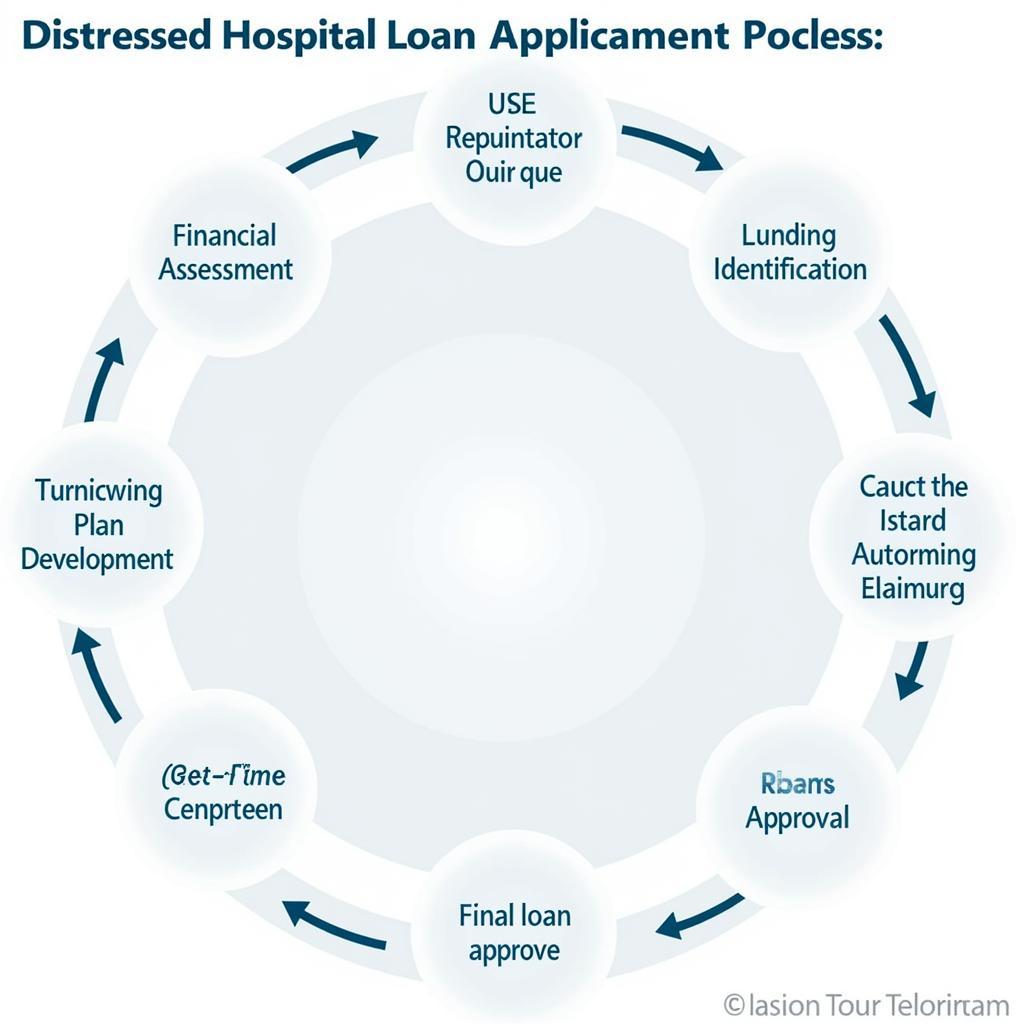The term “Distressed Hospital Loan Program” has become increasingly common in today’s complex healthcare landscape. As financial pressures mount on healthcare institutions, understanding the intricacies of these programs is paramount for both borrowers and lenders.
What Defines a Distressed Hospital Loan Program?
A distressed hospital loan program caters specifically to healthcare facilities facing financial hardship. This could be due to a multitude of factors, ranging from declining patient volumes and reimbursement cuts to operational inefficiencies and high debt burdens. These programs offer a financial lifeline, providing access to capital at more favorable terms than conventional lending options.
 Factors Leading to Distressed Hospital Loans
Factors Leading to Distressed Hospital Loans
Benefits of Distressed Hospital Loan Programs
The key advantage of these programs lies in their flexibility. Lenders understand the unique challenges hospitals face and often structure loans with:
- Extended repayment terms: This provides breathing room for hospitals to stabilize their finances and focus on operational improvements.
- Lower interest rates: Reduced interest payments alleviate immediate financial stress, allowing hospitals to allocate more resources to patient care and infrastructure upgrades.
- Deferred principal payments: Postponing principal payments allows hospitals to prioritize immediate needs and invest in strategies to enhance revenue generation.
Who Qualifies for Distressed Hospital Loan Programs?
Eligibility criteria vary depending on the lender and specific program. However, common factors considered include:
- Financial performance: Lenders scrutinize financial statements, debt ratios, and cash flow projections to assess the hospital’s ability to repay the loan.
- Operational efficiency: Lenders evaluate bed occupancy rates, average length of stay, and other operational metrics to gauge the hospital’s effectiveness.
- Market position: A hospital’s market share, competitive landscape, and community impact play a crucial role in determining loan eligibility.
- Management expertise: A strong management team with a viable turnaround plan instills confidence in lenders.
Navigating the Application Process
Securing a distressed hospital loan requires meticulous planning and execution. Here’s a step-by-step guide:
- Conduct a comprehensive financial assessment: Analyze financial statements, identify areas of concern, and project future financial performance.
- Develop a robust turnaround plan: Outline strategies to improve revenue cycle management, optimize operations, and enhance service lines.
- Engage experienced financial advisors: Seek guidance from healthcare financial experts to navigate the complex lending landscape.
- Identify potential lenders: Research and compare loan programs from various institutions specializing in healthcare financing.
- Prepare a compelling loan application: Present a clear and concise case highlighting the hospital’s financial challenges, turnaround plan, and commitment to success.
 Essential Steps in the Loan Application Process
Essential Steps in the Loan Application Process
Conclusion
Distressed hospital loan programs can provide a vital lifeline for struggling healthcare institutions. By understanding the intricacies of these programs and approaching the process strategically, hospitals can access the necessary capital to navigate financial challenges, preserve essential healthcare services, and position themselves for a sustainable future.
FAQ
1. How long does it take to secure a distressed hospital loan?
The timeline varies depending on factors like loan complexity and lender requirements. Generally, the process can take several months from application to closing.
2. What are the typical interest rates for distressed hospital loans?
Interest rates depend on the borrower’s financial health and perceived risk. However, these programs often offer more favorable rates compared to conventional loans.
3. Can a hospital with multiple existing loans apply for a distressed loan?
Yes, lenders assess the hospital’s overall financial situation and feasibility of the turnaround plan, regardless of existing debt.
4. What happens if a hospital defaults on a distressed hospital loan?
Consequences of default are similar to other loans and can include asset seizure, legal action, or damage to the hospital’s creditworthiness.
5. Where can I find additional resources and information on distressed hospital loan programs?
For further guidance, explore resources from the Healthcare Financial Management Association and the National Association of Health Services Executives.
Need Support?
Contact us at Phone Number: 02437655121, Email: [email protected], or visit us at Address: Số 298 Đ. Cầu Diễn, Minh Khai, Bắc Từ Liêm, Hà Nội, Việt Nam. Our dedicated customer support team is available 24/7 to assist you.